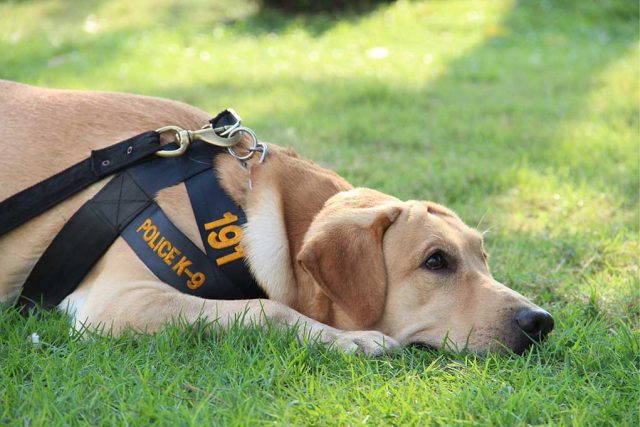
Police K-9s, also known as police dogs, are special dogs trained to assist police officers or other law-enforcement personnel.
Police officers also use these dogs to find evidence in crime scenes or find missing people. These dogs are the literal definition of partners in crime in the police force.
They don't just provide companionship to the police force, but they also give safety and security to the community they are serving.
While, and especially on duty, police dogs should not be, in any form, petted or distracted, or else they might lose their attention.
They are considered to be sworn officers in the eyes of the law and are equal to their human counterparts.
Protecting Police K-9s in Florida
Events leading up to the K9 killings are stressful, especially for handlers who took care of them until their passing.
To address this problem, Florida Attorney General Ashley Moody highlights the necessity to create a law protecting K9s in service.
It is called Senate Bill 388, or most commonly known as Companion Bill.
Florida's Companion Bill
Senate Bill 388 states that paramedics or emergency medical technicians may provide care to a police canine on duty.
It has to be on the spot or while the dog is in the ambulance, rushed to a veterinary clinic, hospital emergency department, or similar facilities.
Alongside the said bill, prominent lawmakers Senator Tom A. Wright and Rep. Sam Killebrew created House Bill 697.
This bill reflects on emergency transportation and provides emergency medical care to wounded K9s, fatal or not.
According to Moody, both policemen and their canine counterparts encounter risks in their everyday services to the community. Thus, they must have equal protection.
“SB 388 is a much-needed step in the right direction to ensure the safety and health of our K-9 officers. However, a K-9 and their handler are partners, and we must ensure our laws do not get in the way of their service to our state,” said Wright.
“I cannot imagine being a uniformed officer watching your partner perish because there's some stupid law on the books that says no.
We've got an ambulance here. We've got two paramedics. They've got lights and sirens. And we can't take this animal to an emergency vet hospital?
Give me a break,” he added from an interview in January 2020.
“What often happens now in that situation, these [law enforcement] officers don't wait for the EMS. They say, ‘To heck with you; I've got a squad car.'
But then there's nobody in the back. There's nobody putting compression on the wound if it is a bleeder or something like that,” Wright also adds.
As a former K9 officer on duty himself, Wright expressed his need to create a law that protects and aids the furry crimefighters.
He is also the same lawmaker who supported Senate Bill 96, which gives penalties to anyone who injures or kills police dogs and horses.
As long as the medical personnel acts in good faith, the law protects them from any criminal offense related to taking care of the injured dogs.
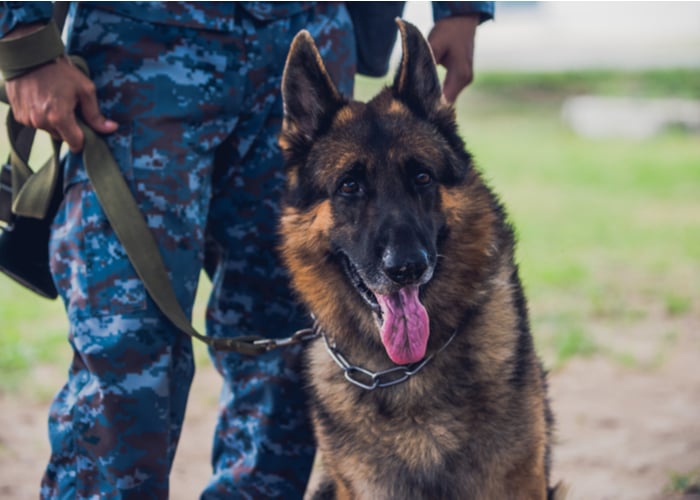
Other Laws in the U.S. that Protect Police K-9s
H.R.1791 – 106th Congress (1999-2000): Federal Law Enforcement Animal Protection Act of 2000 is another law that protects police dogs.
This law states that anyone convicted of harming, assaulting, maiming, and killing police dogs on purpose is fined $1000 and will spend up to a decade in prison.
Another bill proposed was Senate Bill 96 (2019), which increases the penalty and imprisonment if knowingly caused great bodily harm, disability, and death to police dogs and horses.
Effective October 1, 2019, this bill considers law enforcement animals as property of the government, and harming or killing them automatically charges a crime to the offender.
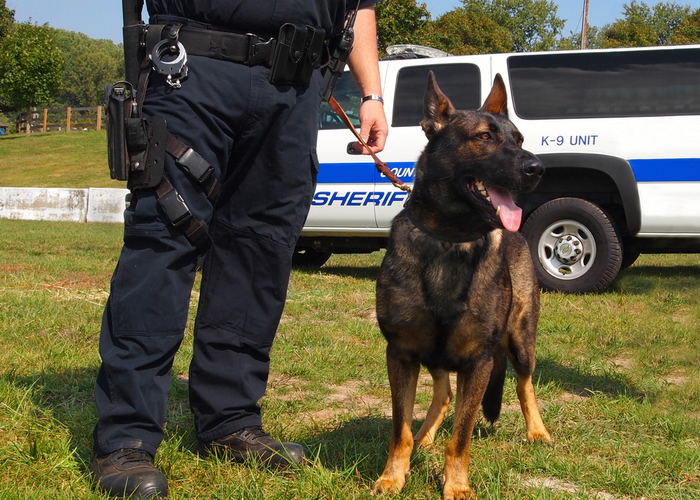
The History Of Police K-9s
Since the Middle Ages, dogs have been used to execute law enforcement, and it still exists today.
Mastiffs and Bulldogs were prime choices of war by the Romans, Egyptians, Britons, Greeks, and Persians.
However, proper documentation associated with training dogs existed by the turn of the 20th century, located in Ghent, Belgium.
The Belgian training school is the first of its kind, dating back to 1899, which earned them the title of leader in K9 training and utility.
The first dogs they tried to train are Belgian sheepdogs and wolfhounds, which were deemed successful.
In 1907, New York (N.Y.) Police Commissioner, Brigadier General Theodore A. Bingham, sent Inspector George R. Wakefield to Ghent to study the process.
The New York Police Department program has later adopted the program starting with 5 Belgian sheepdogs for breeding and operating.
Unfortunately, the K9 unit disbanded due to the fear that it gave to the community. Patrol cars were also rendered useless because of the team.
Years later, in 1956, the Baltimore City (M.D.) Police Department instituted the first canine corps in modernity in the United States. Since then, police departments of other states have followed suit.
The best-known breed trained as a police dog is the German Shepherd because of its agility and ability to take cues.
Since then, more dogs partake in the police force with their enhanced ability to detect people, items, or vehicles.
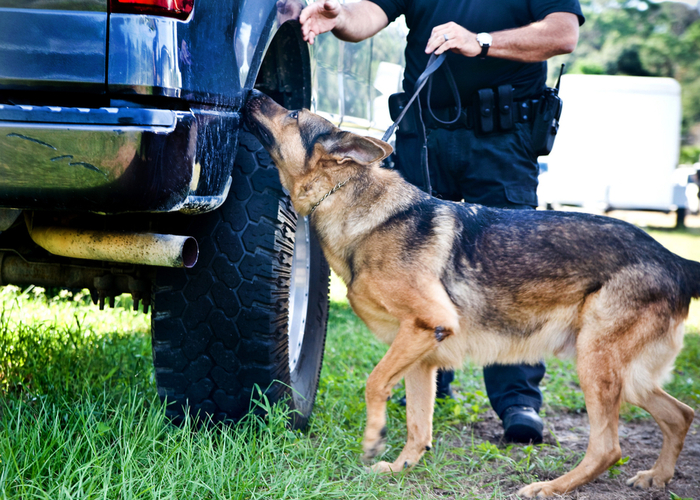
How Are Police K-9s Trained?
Police dog trainers are trained for at least four to six months, depending on their assigned unit and what they're preparing for.
The dogs, however, may depend on their personality, traits, and how well they can behave when partnered up.
These are the types of K9 training that both human and K9 counterparts go through before dispatch:
Advanced Obedience Training
This is similar to basic obedience tricks like sitting, but advancing obedience training implies maintaining their skills as time passes.
Relationship with Dog
This step requires a human officer to form a tight bond with a K9 to the extent that they don't abide by others except them.
Socialization
The K9 must learn how to socialize with others, but not to the extent that they may get distracted while working.
Agility and Training
This reinforces their instincts and reactions and tests their skill, especially in handling a chase.
Nose Training
Dogs have a specific sense of smell that can be used for investigations, and training them in utilizing their nose is essential as a K9 officer.
It is safe to assume, though, that K9s train for at least eight months before partnering up with their officers-in-charge.
If a team is considered ready to work, they must finish a minimum of 16 hours of training per month.
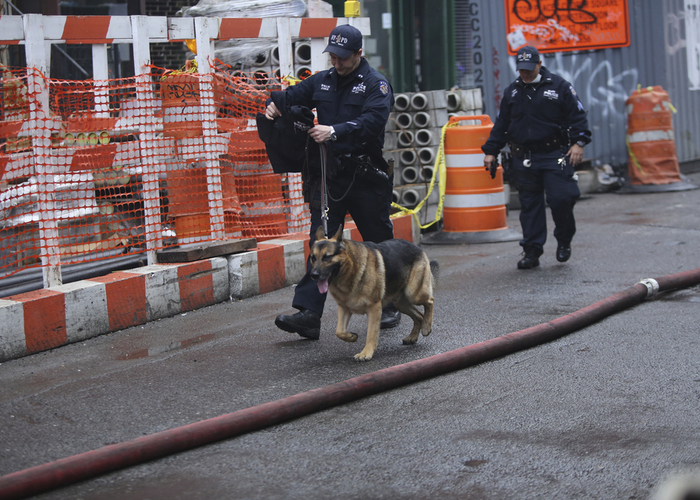
Police K-9s Specialties
Police K-9s units have three classifications to them, and it usually depends on the central skill they have. The variations typically indicate their skill in searching, identifying, retaining, and apprehending.
It also includes their agility and ability in the field of work that they're in.
Each dog has its specialty depending on its duties, and that includes:
Narcotic Police K-9s
They are the police dogs assigned to navigate and search for vehicles, items of luggage, and people with a distinct smell. They are capable of remembering the residue of drugs to identify substances as a whole.
Explosives and Gunpowder Police K-9s
Similar to Narcotic K9s, except they are assigned to smell their way to identify the location of explosives and weapons.
Search and Apprehension Police K-9s
Dogs in this specialty are taught how to track and apprehend humans and bite them to submit.
You wouldn't want to fight against this type of police dog because they will hold on even if you throw them your best punches.
There are a lot more sub-units and terms used to describe different types of K9 classifications. These three are the most common, however, especially in utilization and identification.
With these specific traits in mind, let's proceed to what breeds best fit the K9 criteria.
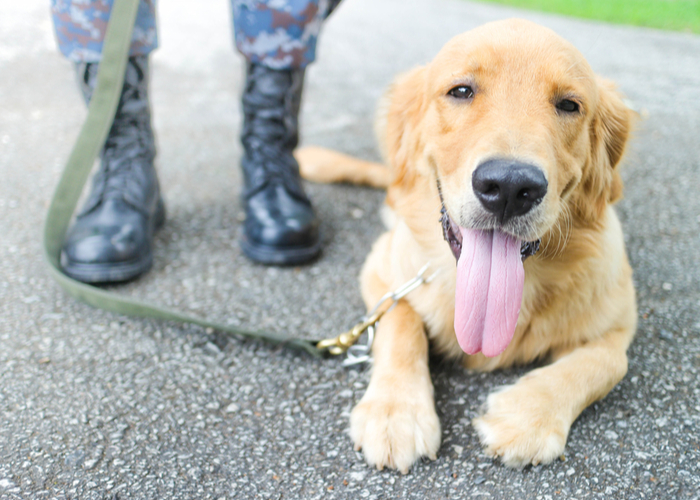
Popular Police K-9s Breeds
Not all dog breeds fit the standard as a K9 does; while most of them may look scary, they might just not fit the criteria.
For example, have you ever seen a Chihuahua or a Shih Tzu apprehending a fleeing suspect?
K9 officers must be dogs who are agile, fast, and may pass off as intimidating. Others may need their unique tracking instincts to maneuver their way in investigations.
Some of the best dog breeds that are fit as police K-9s are:
German Shepherd
With their wolf-like appearance and obedience, German Shepherds are best for being in the line of duty. These dogs are bred to be versatile and easily take cues from their officers.
Beagle
They're best when sniffing out narcotics and potential bombs located around a perimeter. The small figure of Beagles makes them a surprisingly excellent K9 breed.
Belgian Malinois
Another dog breed best as a police dog, Belgian Malinois, are smaller cousins of the German Shepherds. They're usually found in the military and are likely to be found in the navy.
Bloodhound
A distant cousin of the Beagles also utilizes their sense of smell to track missing items, drugs, or even people. They say that Bloodhounds are the type of dogs that could find a needle in a haystack.
Rottweiler
A superior working dog breed, Rottweilers are shy around people they don't know and are friendly with those they're familiar with. This trait makes them reliable during work and an excellent addition to the police force.
Labrador Retriever
As a dog once bred as a hunting and retrieving gun dog, the Labrador Retriever's sense of smell makes it ideal as a narcotic K9 breed. Furthermore, these dogs are brilliant, which makes them easy to train.
Doberman Pinscher
They're mostly the breed seen on T.V. shows as a scary K9, but in fact, they are not aggressive. They enjoy going out to the fields to work and are usually the breed assigned as apprehension police dogs.
Boxers
This breed serves in the military and acts as messenger dogs during crossfires in World War I and II. They're a popular K9 breed within Europe, especially in Germany, but not in the U.S.
Dutch Shepherd
Known for being non-aggressive, Dutch Shepherds are ideal for patrolling and detecting people and unknown substances. Most often, they are sniffing out and detecting narcotics.
German Shorthaired Pointer
German Shorthaired Pointers are intelligent, enthusiastic, and daring in the transition to training as a police dog. They're non-aggressive and are easy to work with, which makes them suitable for working with police.
Cane Corso
This dog breed is suitable as an apprehension K9, as their bite is one of the strongest out of all canines. They're also excellent for patrol work within their perimeter and are adaptable, with an excellent working attitude.
Briard
With their alert and strong personalities, Briards are capable guard, watch, and PTSD service dogs. However, their field of work still varies from the usual German Shepherd type of work.
Border Collie
Commonly thought of as an apprehension dog, Border Collies are suitable for explosives and narcotics location and identification. These dogs are also an expert in terms of finding decomposing bodies within an area.
Golden Retriever
Not suitable as a guard or watchdog due to their friendly and affectionate nature, Golden Retrievers are typical for tracking and detection.
Their refined sense of smell helps detect substances or gunpowder, and even as a cadaver tracker.
Belgian Tervuren
This breed is related to the German Shepherd, and Belgian Malinois are originally guarding dogs breed. They are a popular breed when it comes to police forces within Belgium.
There are many more breeds suitable as police dogs, like the Groenendael and the English Springer Spaniel.
Some of them may be seen as normal domestic dogs but can be more challenging than you think.
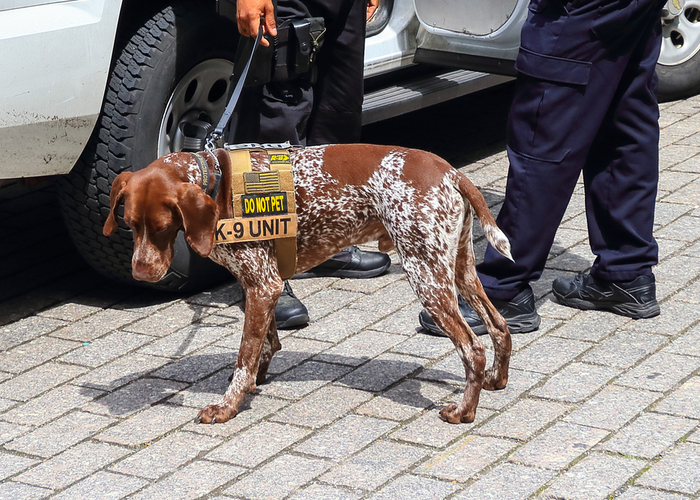
Police Dogs' Retirement
A K9 is usually in service when they're about 12 to 15 months old and retires when they're nine years old.
They are sent to loving homes, usually by their handler or other authorized people.
However, that was not the case until President Bill Clinton came into position. Before Pres. Clinton signed Robby's Law in 2000; retired K9s get euthanized after their service.
The first choices for K9 retirement are always their handlers, considering the times they bonded.
If their handler has passed or is incapable of taking care of the retired police dog, that's when other people come into view to take care of them.
It's usually other people within the police force or people who they trust to adopt the dog.

K9 Health Risks
Commonly diagnosed health problems within police dogs centralize around their heart, digestive tract, and lungs.
It may include intestinal parasites, congestive heart failure, and Babesiosis.
Congestive heart failure and arrhythmia are common cardiovascular conditions because of strenuous exercises associated with their field of work.
Dermatitis and otitis externa are the leading conditions for K9s, mainly because of allergic reactions associated with gunpowder or explosive smoke.
Furthermore, Babesiosis is also a common occurrence caused by an infected tick bite they might get while on the move.
They may also have intestinal parasites with their food that can potentially upset their digestive tract.
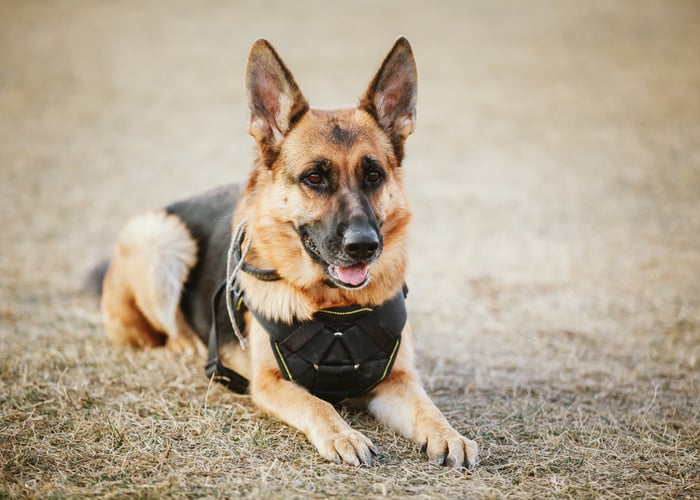
On the Importance of Protecting Police K-9s
Police K-9s are just as equally exposed to danger as regular policemen. K9 “assassinations,” or killings, are becoming frequent simply because of their affiliation to the police force.
On September 30, 2018, in Wisconsin, USA, a 3-year-old Jacksonville Sheriff's Office K9 named Fang got shot and killed by a 19-year-old teenager after carjacking two women by a gas station.
It resulted in the suspect's imprisonment of up to 25 years.
On the other hand, an armed suspect shot four-year-old K9 Titan in 1999 while pursuing them in a car. The suspects ended up in Colfax Court.
A most recent event happened during Christmas Eve in 2018, where K9 Cigo was shot after an open fire in Wellington Green Mall during an attempted murder.
He was credited for saving two deputies during that time, which led to the shooter's arrest.
In Florida, approximately forty-nine K-9s have died while being in service.
However, despite these killings, aiding and transporting injured K-9s were considered illegal in the state before, resulting in a person's imprisonment.
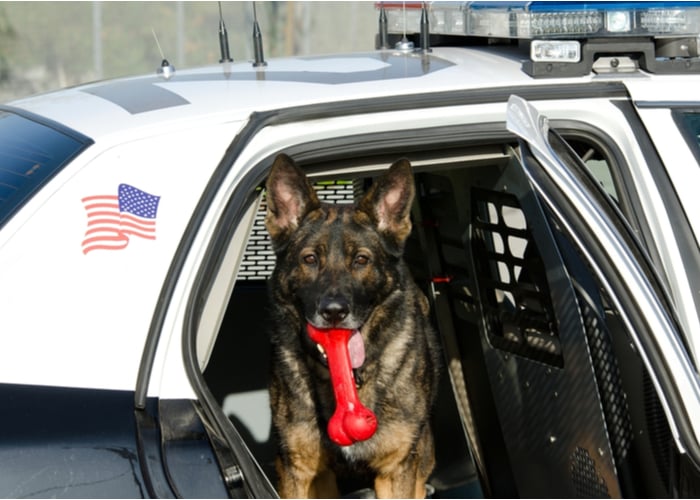
Conclusion
In many countries, harming or killing a police K-9s officer is considered a criminal offense and is taken seriously.
The importance of protecting K-9 dogs is that they are still living beings whose purpose is to serve and protect us, just like regular police officers do.
Dogs prove their versatility within numerous different tasks, which determines how well they can help us. It doesn't matter if it's a police dog or not, animal cruelty is condemned and illegal.
Not all heroes have to look or be human, and police K-9s units are prime examples of that.












